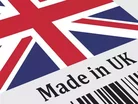UK manufacturing shows signs of revival, but how can we make it thrive?

The manufacturing sector is showing signs of revival after an unexpectedly weak start to the year, according to the Office of National Statistics (ONS). However, in order to capitalise on this momentum, manufacturing firms should turn their attention to the Internet of Things (IoT).
ONS found that output in the UK’s industrial sector improved for a third straight month in August. The figures show that manufacturing was the driving force behind the improvement, with annual growth rising from 1.9 percent to 2.8 percent.
However, the sector cannot rest on its laurels and expect these most recent figures to be a sign of continuous growth. Emerging technologies, such as IoT, robotics, and artificial intelligence, offer the industry an opportunity to build on this success and thrive.
The ONS said the biggest contributor to recent manufacturing growth was “other manufacturing and repair”, which includes high-value repair and maintenance contracts for items such as aircraft and ships. The use of IoT in manufacturing and repair is a good example of how the technology can boost the sector.
With IoT, manufacturers can automate procedures, speed-up the maintenance process, and use sensors to remotely monitor devices, thereby allowing them to spot faults early, ensuring that potential problems are fixed quickly before they escalate.
But IoT offers so much more potential to manufacturers than merely improving efficiency and automating procedures. This type of technology already is changing how the industry operates. It is changing the concept of a product from one where something is created, sold, and forgotten to one where value can be derived across the entire supply chain, throughout the product’s lifecycle.
To give an example of this process in action, take solar panels. Once an IoT enabled solar panel is installed, sensors can gather valuable information throughout the product’s lifecycle, enabling companies to use real-world performance data to assist their design of next-generation devices. This data also can be used to monitor for potential maintenance issues, ensuring that repair teams can act before costly faults occur, and customers have added peace of mind that their devices are being continuously monitored for faults.
Recent research may give UK manufacturers grounds for optimism, but real, sustained growth only will be achieved if the industry embraces new technologies, such as IoT, and is prepared to use these technologies to alter and optimise business models.
By Mohsen Mohseninia, VP of Market Development, Europe, at Aeris
- The University Manufacturing Circuit Boards from LeavesSustainability & ESG
- Schneider Electric's Commitment to Sustainable ManufacturingSustainability & ESG
- Lenovo & Saudi Alat Building Green Manufacturing FacilitySustainability & ESG
- Nissan Brings Biodiversity to the Factory through RewildingSustainability & ESG

